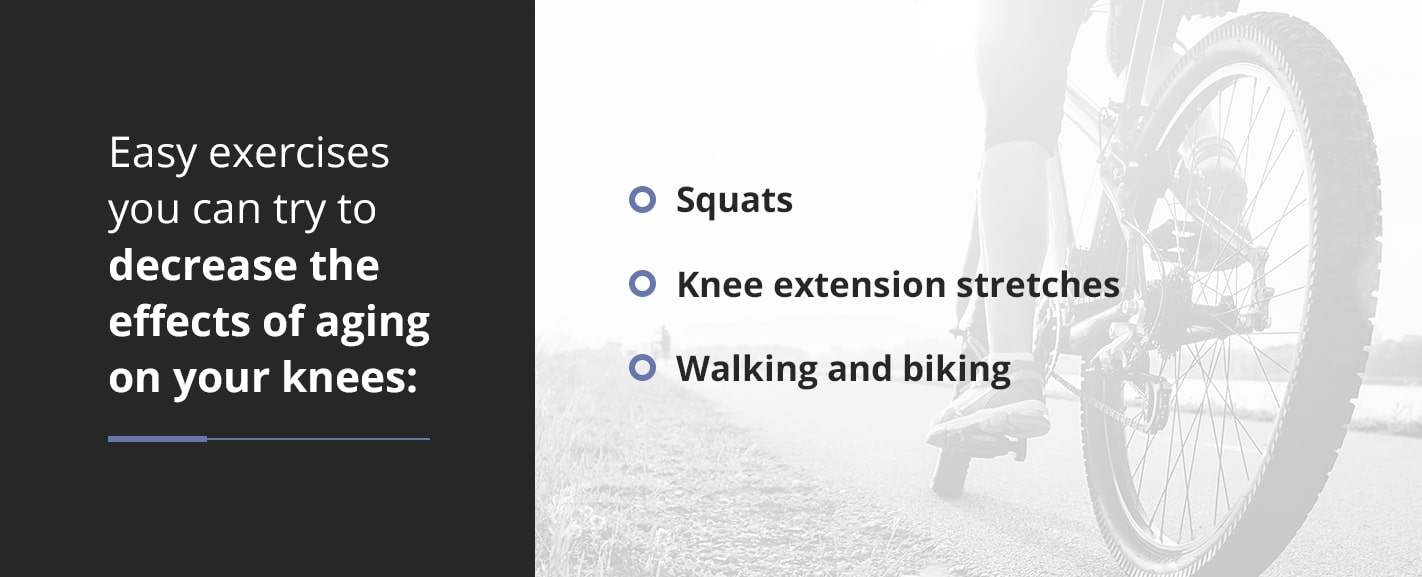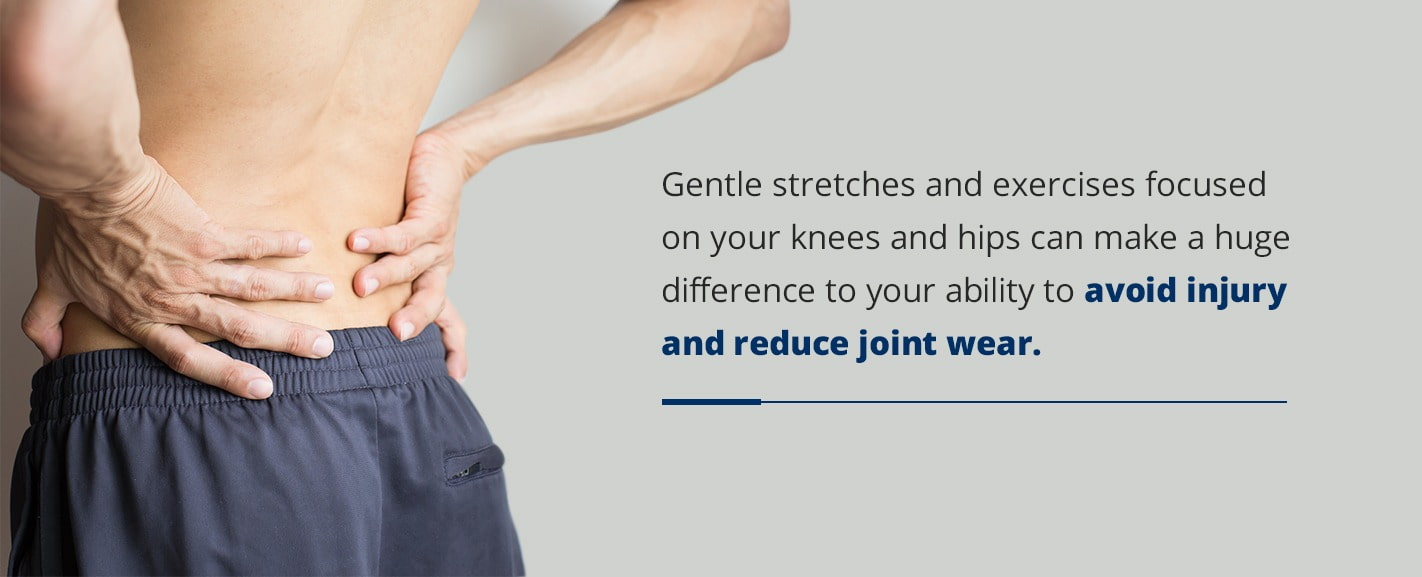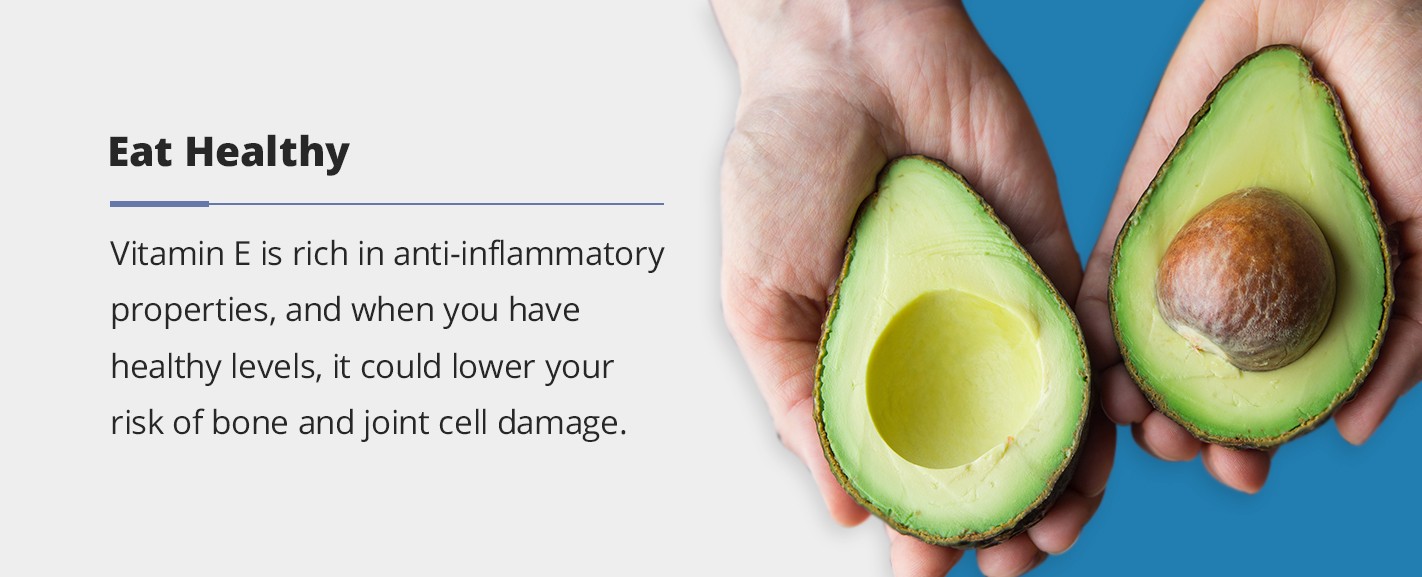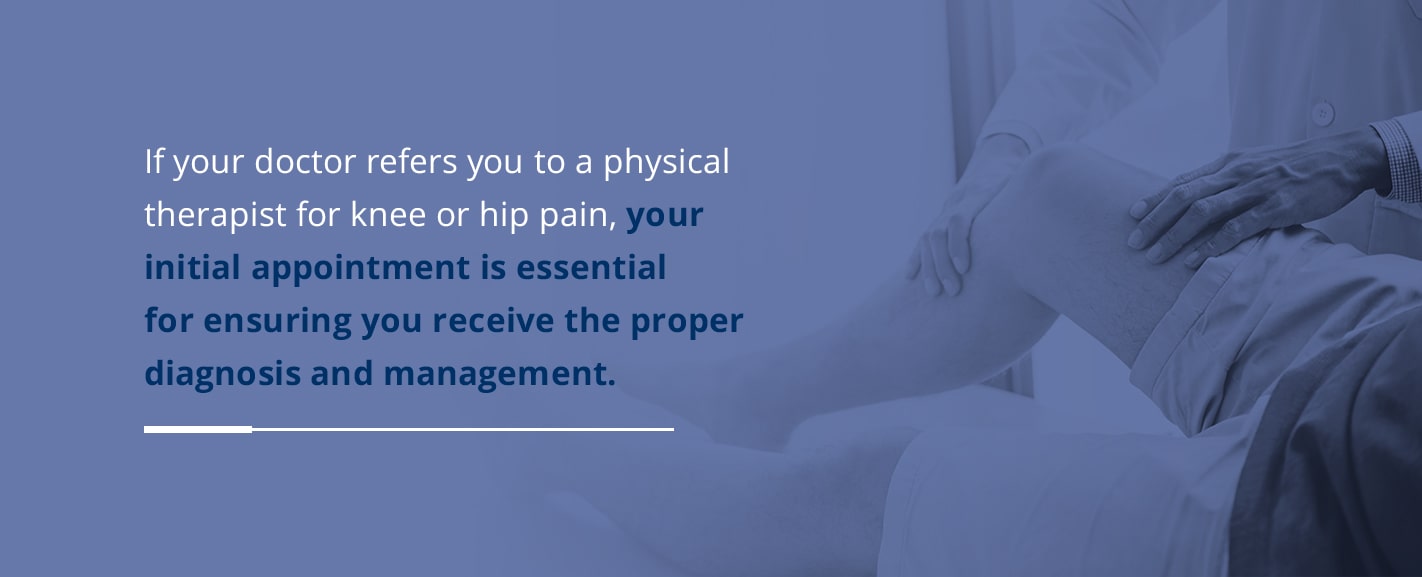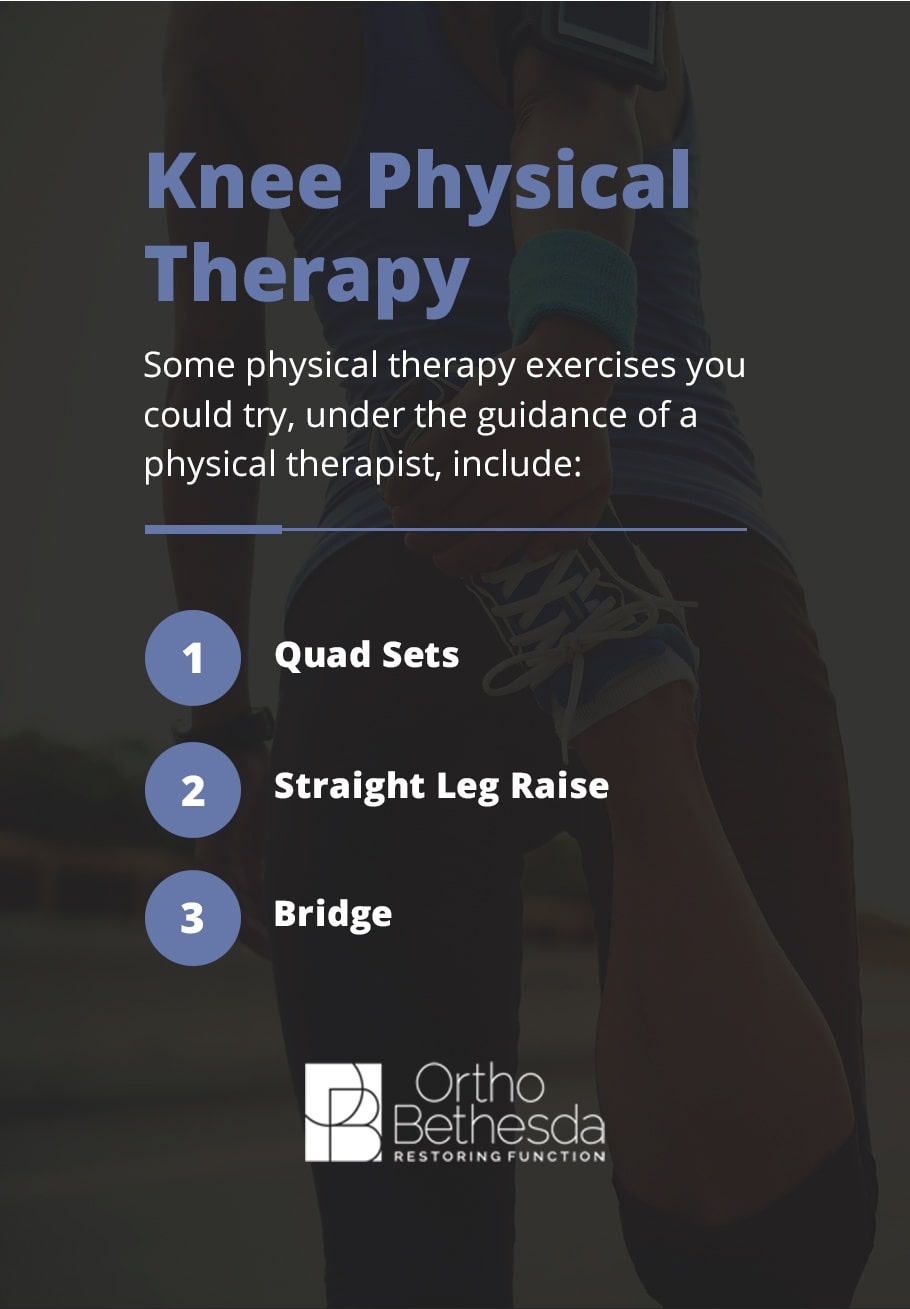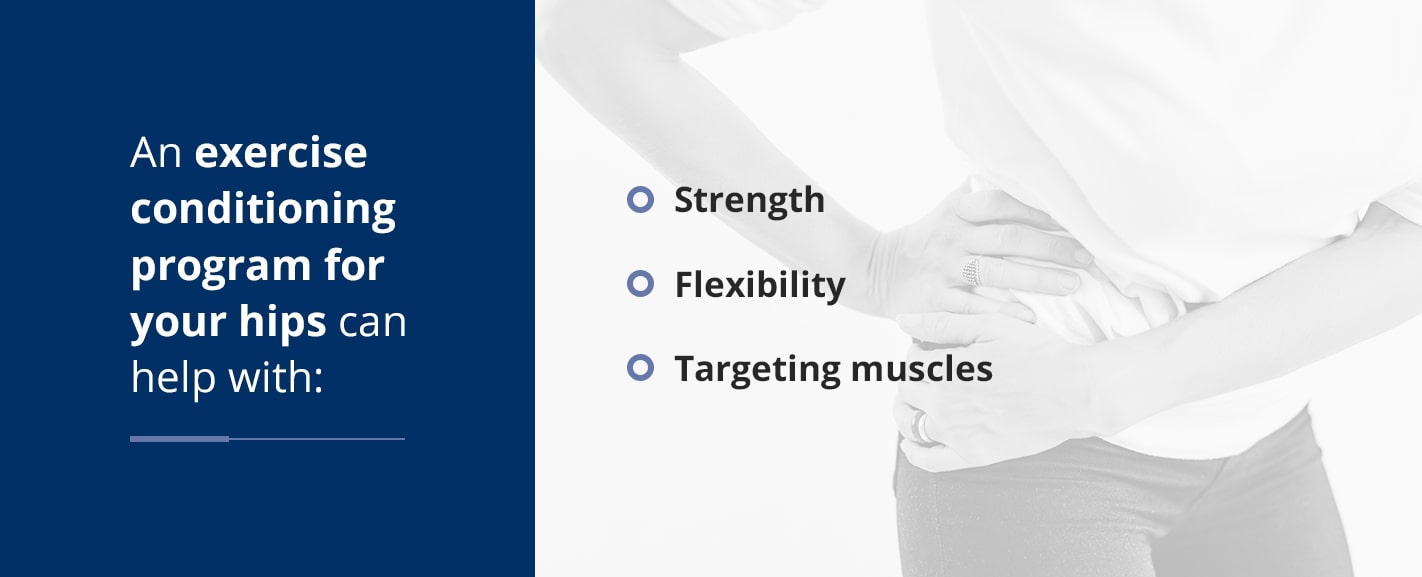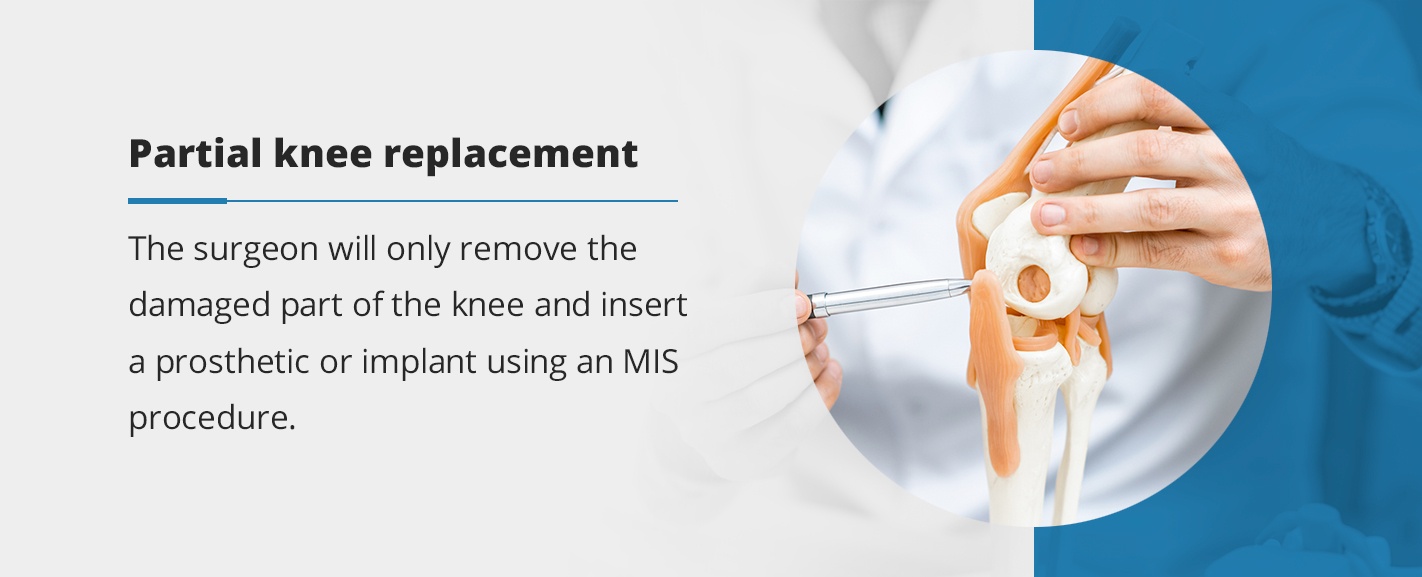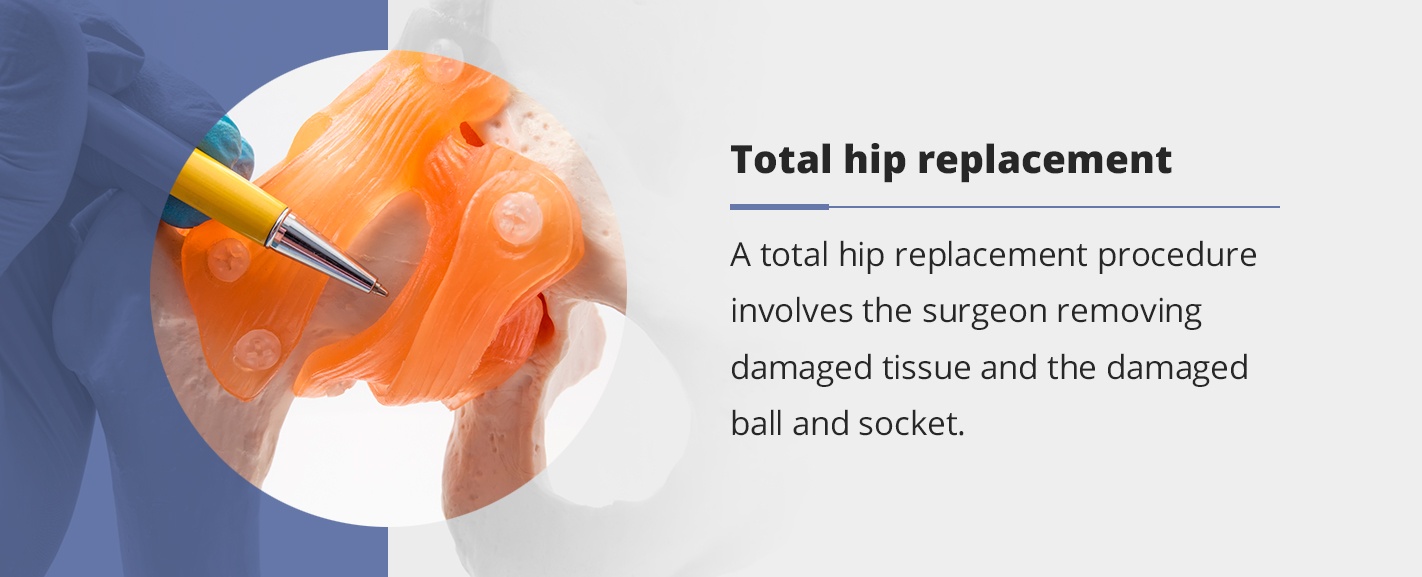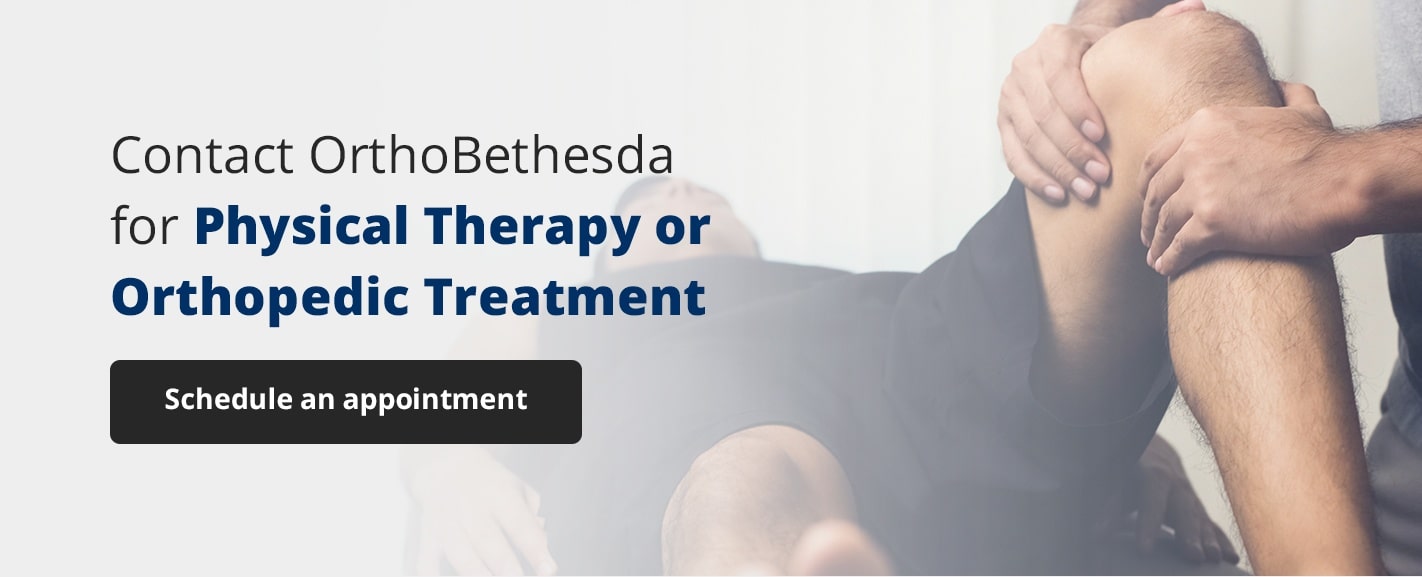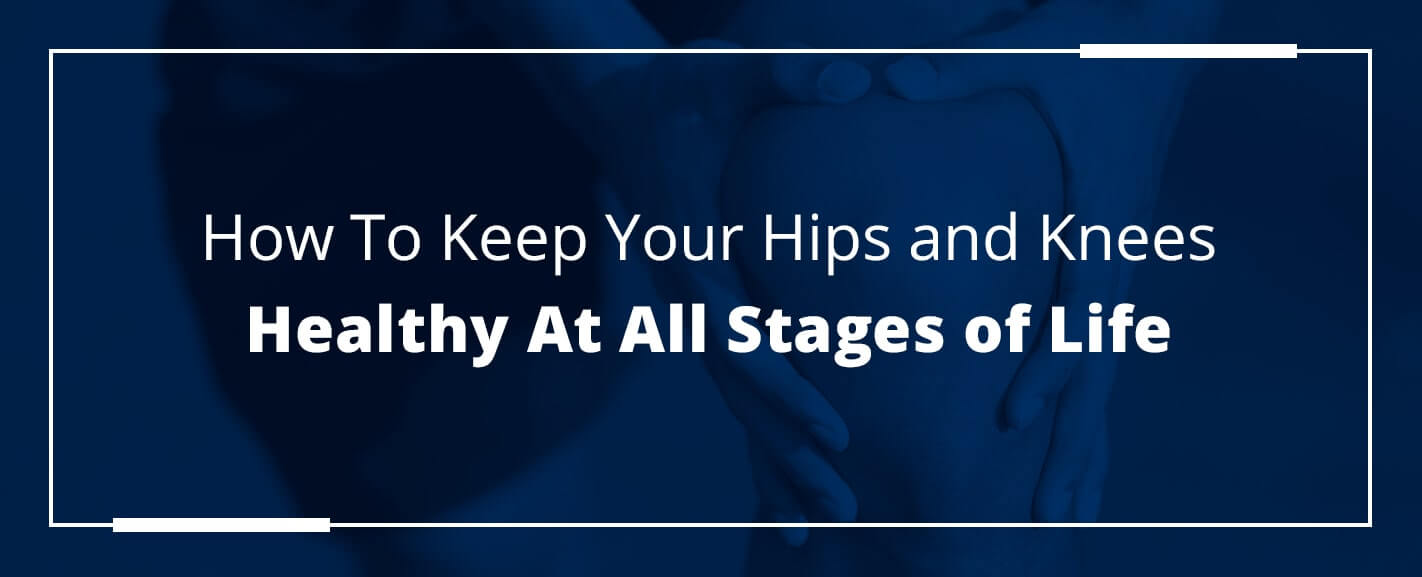
The top cause of disability in the United States among adults is arthritis — around 54 million adults have received a diagnosis. Osteoarthritis is the most common form of arthritis, estimated to affect around 31 million individuals in the U.S. alone.
Knees
Knees are important for your body to function well at all stages of life, but particularly when you’re older. Your knees are weight-bearing joints and absorb a large amount of pressure with each step you take, usually one and a half times the weight of your body. This pressure, combined with normal wear and tear, can take a toll over time.
When you’re experiencing knee pain, it can be difficult to get out of a chair, walk and climb stairs. Your knees ache, swell and can become completely uncooperative.
As you get older, knee pain becomes more common and is frequently caused by knee cartilage wear, also known as osteoarthritis. However, there are ways you can prevent or postpone knee issues. In many situations, you can avoid or delay the requirement for surgical intervention like a knee replacement.
Comorbidities frequently accompany knee osteoarthritis, contributing to reduced quality of life. These may include:
- Hypertension
- Obesity
- Diabetes
- Depression
Tips on How to Keep Knees Healthy
To keep your knees healthy, try to:
1. Lighten the Load
Walking can put significant stress on your knees, especially if you’re carrying around extra pounds. Extra weight on your knee joint can expedite osteoarthritis joint degeneration. To avoid or slow down the process of degeneration, be sure to maintain a healthy body weight.
When you’re carrying extra body weight around, it can add stress to your joints, particularly your weight-bearing joints. Weight-loss can substantially decreases osteoarthritis-related knee symptoms, like:
- Stiffness
- Function issues
- Pain
2. Perform Regular Exercise
Performing regular exercise is a great way to keep your knees healthy. Here are some easy exercises you can try to decrease the effects of aging on your knees:
- Squats: Squats are something you should incorporate into your exercise routine often. Ideally, you should do squats three times a week. Start by lowering your body like you would if you were about to sit in a chair. Keep your butt out, head up and knees over your ankles.
- Knee extension stretches: Loss of full hyperextension, or backward knee bend, is the largest chronic knee pain predictor. Even several degrees of loss can expedite aging’s effects on your knees. Prop your heel on your ottoman or coffee table while you place an ankle weight on your knee. Try this stretch daily.
- Walking and biking: For overall knee health, it’s important you continue getting cardiovascular exercise. You can do this through biking and walking. Be sure to check with your physical therapist first if you’re already experiencing knee pain.
3. Avoid Knee and Hip Rotation
Slowing down after running or jumping, which are common activities in exercises, are especially bad for your knee’s anterior cruciate ligament (ACL). When you land, make sure your:
- Knees are over your ankles.
- Joints are aligned with your hips.
- Ankles are over your toes.
4. Put Your Knee on Ice
Never ignore a strain or tweak, regardless of the sport you practice. Putting your knee on ice is an easy way to reduce pain and inflammation.
5. Beware of Running Up and Down Hills
You can add strain on your knees’ tendons by running in hilly terrain. Be sure to keep an eye out for signs your knees require a rest. Try running on a flatter course instead.
6. Cross-Train
Overuse is a gradual, steady way to injure your knee. Choose a range of various activities and alternate your workouts. For instance, if you run one day, try cycling the next, so you use different muscle groups.
7. Wear a Brace
Unfortunately, braces don’t usually prevent injuries. However, you may want your doctor to fit you for one if you’re trying to prevent repeated strains or tears or are rehabilitating an old injury.
Hips
Your hip joint can handle a fair share of wear, tear and repeated motion. Your hip joint is your body’s largest ball-and-socket joint and fits together in a manner allowing for fluid movement. Your hips are important to function well at all stages of life, but especially when you’re older. As your hip bone moves in the socket, a cartilage cushion helps prevent friction.
However, your hip joint isn’t indestructible, despite its durability. With use and age, the cartilage can become damaged or wear down. Tendons and muscles in your hip can become overused. Your hip bones can break during an injury or fall, and this can result in hip pain.
Another factor is osteoarthritis. There’s an estimated 25.3 percent symptomatic hip osteoarthritis lifetime risk, and conditions potentially causing OA need addressing to decrease the quality of life lost caused by:
- Functional limitations
- Disability
- Economic impact
Tips on How to Keep Hips Healthy
Try these tips to help keep your hips healthy:
1. Exercise
Although it’s possible to wear your joints out prematurely with excessive movements, moderate exercise is the best way to keep your hips healthy.
The benefits of regular exercise outweigh the negatives. When you build flexible, strong muscles around your knees and hips, it will ensure your joints aren’t doing all the work. Gentle stretches and exercises focused on your knees and hips can make a huge difference to your ability to avoid injury and reduce joint wear.
2. Practice Weight Training
You need to keep the muscles supporting your joints as strong as possible. Strengthening exercises can help you maintain or improve your muscle strength. Weight training is frequently incorporated into a strengthening regimen. You’ll want to pace your workouts and avoid doing too much, too fast. You’ll increase joint stability with proper strength training and reduce your pain.
3. Eat Healthy
Your body is similar to a machine that has moving parts, in which it requires oil to maintain healthy and lubricated joints. Try to eat oily fish rich in omega-3 fats like mackerel and salmon.
Vitamin E is rich in anti-inflammatory properties, and when you have healthy levels, it could lower your risk of bone and joint cell damage. You’ll get plenty of Vitamin E by adding sunflower seeds, avocado, lobster and nuts to your diet.
Additionally, antioxidants help slow down the progression of arthritis inflammation. You can find them in brightly-colored berries, like blueberries.
4. Quit Smoking
Most individuals aren’t aware smoking increases their risk of bone fractures and osteoporosis. Smoking also increases the risk of injuries like tendonitis and bursitis. When you smoke, you have a bigger risk of lower back pain and rheumatoid arthritis. Quitting smoking can help improve joint and bone health.
Physical Therapy Evaluation for Knee and Hip Pain
If your doctor refers you to a physical therapist for knee or hip pain, your initial appointment is essential for ensuring you receive the proper diagnosis and management. During your visit, the physical therapist will sit down with you and collect information about:
- Your past medical history that could be contributing to your overall issue.
- Your history of the issue you’re experiencing.
- The irritating and relieving factors.
Once the physical therapist has gathered this pertinent information and history, an exam will likely follow, which could involve:
- Gait evaluation: This evaluation will assess how you walk. Your physical therapist is trained to notice even tiny changes in your knee’s motion during different walking phases.
- Range of motion measurement: This will measure how far your knee bends or straightens. They’ll likely use tools for measuring how your knee moves to help guide treatment.
- Palpation: The physical therapist will use their hands to touch different knee structures to feel for irregularities or to evaluate if there’s a certain structure that’s painful to the touch.
- Evaluation of your balance: This test will test your balancing abilities. If you have impaired balance, excessive strain and stress might be directed to your knee, causing pain.
- Strength measurements: You have various muscular attachments around your knee, and assessing your strength could help determine if imbalance or muscular weakness is causing your knee pain.
- Swelling or girth measurements: Sometimes, swelling might be present after injury in your knee joint. The physical therapist might measure how much swelling you have to direct treatment.
- Special tests: The physical therapist will perform certain maneuvers around your knee to see which structure might be causing the issue.
Physical Therapy Options for Knees and Hips
To help improve your knee function as you age, you have physical therapy options for both your knees and hips.
Knee Physical Therapy
If you’re experiencing knee pain, you might benefit from physical therapy knee exercises. These exercises could help improve your strength and range of motion around your knees, reducing or eliminating knee pain.
Your primary tool in maintaining good mobility and strength in your knees is exercise, and some easy at-home exercises could help your knee’s ability to move correctly. After knee surgery or injury, the physical therapist might prescribe certain exercises to help you get back to normal function and activity.
Some physical therapy exercises you could try, under the guidance of a physical therapist, include:
1. Quad Sets
An easy way to work your quadricep muscles and support your knee joint is to perform quad sets. For this exercise, you’ll lie on your back and straighten your knee. Tighten your thigh’s top muscle by pushing the back of the knee into the ground. You can roll up a small towel and place it underneath your knee so it’s more comfortable and to provide you with something you can push your knee into. You’ll want to hold this position for a few seconds, relax and repeat.
2. Straight Leg Raise
Lie on your back, keep your foot flat on the ground and keep one knee bent. Tighten the knee of your straightened leg, lifting it up to your bent knee’s height. You’ll feel your hip flexors and quads working. Engage your abs to keep your pelvis still.
3. Bridge
Lie on your back and bend both knees. Lift your hips as high as possible as you squeeze your glutes. Try lifting your toes off the ground while putting weight onto your heels. Lower your hips and repeat.
Hip Physical Therapy
Hip physical therapy involves several types of exercises and programs, including:
1. Exercise Conditioning Program
After a surgery or injury, an exercise rehabilitation or conditioning program could help get you back to your regular daily activities and enjoy a healthy, more active lifestyle. You can also return to recreational activities like sports if you follow a well-structured exercise conditioning program.
An exercise conditioning program for your hips can help with:
- Strength: Strengthening your hip-supporting muscles will help maintain hip joint stability. When you can keep these muscles strong, you can prevent further injury and relieve pain.
- Flexibility: You’ll want to stretch the muscles you strengthen to help prevent injury and restore range of motion. After performing strengthening exercises, gently stretch to help decrease muscle soreness and maintain flexible and long muscles.
- Targeting muscles: This exercise conditioning program targets specific muscle groups, including the gluteus medius, gluteus maximus, adductors, hamstrings, tensor fascia and piriformis.
You should continue an exercise conditioning program for several weeks, unless your physician or physical therapist directs otherwise. You can continue these exercises after your recovery as a maintenance program to protect your thighs and hips for life.
2. Gait Retraining
Hip and knee issues can disrupt how you walk by restricting joint movement, causing pain or weakening muscles. Your regular pattern of walking, standing or running might also cause joint issues and throw off your gait if you have:
- Poor coaching advice
- Weakness in main muscles
- Bad habits
You could walk with an irregular gait for many years before you experience joint injury. Running improperly can lead to injury, since each stride involves greater force.
Your physical therapist will analyze your gait and help you walk the correct way. The right gait might feel odd at first. You’ll most likely have to practice and follow continued instruction before it will become comfortable.
If you’ve had a hip or knee replacement, gait retraining can help you relearn how to stand up straight and use both your legs evenly. You might begin gait retraining in a pool, where the buoyancy of the water takes the weight off your joints, making it simpler to stand up straight.
3. Pool Exercises
There are special benefits to exercising in water, including:
- The water decreases stress on your joints because it supports your weight.
- An 83 to 90 degree Fahrenheit pool is soothing to the joints and comfortable for exercise.
- You can try exercises out before performing them on solid ground.
- You can increase endurance and range of motion without joint pain or strenuous effort.
Orthopedic Treatment Options for Damaged Hips and Knees
Your orthopedic surgeon will assess your knee and determine the best plan of treatment for you, which could include one of the following:
Knee Treatments
Orthopedic treatment for knees includes:
- Knee arthroscopy: Knee arthroscopy is an innovative surgical technique involving the insertion of an arthroscope through small incisions. Your surgeon can avoid more invasive surgical techniques with this option. The arthroscope is a type of viewing tool. Once the surgeon inserts it into your knee joint, it has a small fiber-optic camera that will transmit images onto a computer monitor, so the surgeon can evaluate the joint damage and diagnose your knee issue. Often, they may even be able to treat the knee problem simultaneously.
- Partial knee replacement: A partial knee replacement, also known as unicompartmental knee replacement, is a total knee replacement alternative for individuals with knee osteoarthritis. This procedure is often recommended for patients with symptoms that affect only one side of the knee. The surgeon will only remove the damaged part of the knee and insert a prosthetic or implant using an MIS procedure. They’ll leave the healthy knee parts in for continued use.
- Robotic knee replacement: Many surgeons are keeping up with technological innovations by using robotics during knee replacement procedures. In a robotic-assisted knee procedure, the surgeon uses robotic arm technology to assist during the procedure. They will view a 3D model of your anatomy, and then go on to perform a “virtual” surgery before they perform a real one. This allows them to know precisely where the damaged cartilage and bone are when they begin the actual surgery.
Hip Treatments
Orthopedic treatments for hips include the below options:
- Total hip replacement: Also known as total hip arthroplasty, a total hip replacement procedure involves the surgeon removing damaged tissue and the damaged ball and socket. They’ll replace the ball and socket with prosthetics or implants. The implant will consist of a strong ceramic or metal ball and a durable plastic, ceramic or metal socket.
- Arthroscopy: This minimally invasive surgery can help treat hip arthritis. The surgeon performs this procedure through small incisions. They insert the arthroscope through the incisions. The camera will then project the images on the monitor for the surgeon to view and see the inside of your joint to search for injury or damage. They may also have the ability to repair the joint problem at the same time using the arthroscope.
- Anterior hip replacement: More orthopedic surgeons today offer this type of surgery because it offers the same results as a total hip replacement but with less surrounding muscle and soft tissue disruption. This should allow you to recover faster and experience less pain.
Contact OrthoBethesda for Physical Therapy or Orthopedic Treatment
The doctors, therapists and staff at OrthoBethesda are committed to providing you with outstanding patient care. Our surgeons are board-certified and fellowship-trained in their specialties. They’re respected for their experience and expertise in treating issues that relate to the joints, bones, hands, feet, extremities and spine.
Contact OrthoBethesda if you’re already experiencing pain or are having problems with your hips and knee joints.
Related Content
- Why Are Hip Fractures So Dangerous?
- How to Sleep After Total Hip Replacement Surgery
- When You Can Bend Over 90 Degrees After Hip Replacement
- 8 Signs to Know If You Need Hip Replacement Surgery
- How Long Does Hip Replacement Surgery Take?
- Robotic vs. Traditional Hip Replacement Surgery
- Anterior vs. Posterior Hip Replacement


